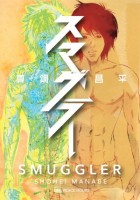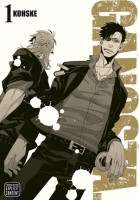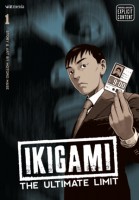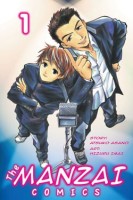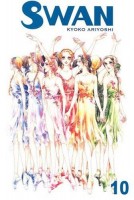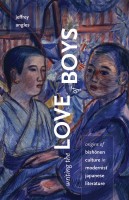 Creator: Hinoki Kino
Creator: Hinoki Kino
Original story: Atsuko Asano
U.S. publisher: Kodansha
ISBN: 9781612623597
Released: February 2014
Original release: 2012
As much as I would like to read them, it is highly unlikely that Atsuko Asano’s series of science fiction novels No. 6 will ever be licensed in English. Happily, two adaptations are available: the 2011 anime series directed by Kenji Nagasaki (which was my introduction to the story) and the manga series by Hinoki Kino. Despite the anime’s bungled ending, I actually quite enjoyed the series, so I was glad to have a chance to experience another interpretation of the original story. The fifth volume in Kino’s manga adaptation was initially published in Japan in 2012. Kodansha Comics’ English-language edition of No. 6, Volume 5, published in 2014, also collects bonus stories not included in the regular Japanese edition. Though it had its high points, overall I found the first volume of the No. 6 manga to be a bit weak. However, each volume has gotten progressively stronger as Kino has had time to more fully develop the series’ characters and world.
With the increase in the number of refugees and the rise in violent crime, the population of West Block has been deemed too large and dangerous. It’s all the excuse the holy city of No. 6 needs to mount a massive cleanup operation, known to the residents of West Block as the Manhunt, in which parts of the area outside the city walls are completely destroyed and the population conveniently “removed.” The Manhunt is a way for No. 6 to keep control and prevent riots, but this time the operation serves another purpose—to gather enough undesirables to serve as human guinea pigs for a top-secret experiment being conducted and authorized by the city’s upper echelons. The Manhunt will also provide Shion and Rat with the opportunity that they need to infiltrate the Correctional Facility in order to search for and hopefully rescue Shion’s close friend Safu. Rat is one of the few people to have made it out of the Correctional Facility alive and doesn’t particular want to go back, but he isn’t about to allow Shion to attempt it on his own.
This is the volume of No. 6 in which Shion is brought dangerously close to his breaking point, and it is heart-wrenching to witness it happen. Living in West Block has been slowly changing him; it’s an environment that is drastically different from the seemingly perfect city of No. 6 where he spent almost his entire life. But the violence and suffering that Shion has been exposed to in West Block is nothing compared to the extent of the very deliberate cruelty of the Manhunt. Any faith that he still had in No. 6 is shattered when confronted with this horrifying atrocity, absolute proof that the city is not at all what it claims to be. Shion by nature has a very positive and optimistic outlook on life, but he has begun to lose that. Both he and Rat regret that change and even fear how much Shion might continue to change, especially in light of the most recent turn of events. Shion will never be able to return to the person who he once was no matter how much either of them would want it.
The characters and their growth continue to be some of the strongest elements of Kino’s No. 6 manga. This is especially true of Shion, as can particularly be seen in this volume, but Rat has also been changing in significant ways. The supporting cast, too, has almost all seen at least some minor development. The only major exception to this is the research scientist in charge of No. 6’s experiment. In fact, even though the series is more than halfway over, he doesn’t even have a name yet and is only referred to as “the man in white” in the character profiles. Since he seems to be one of the series’ main antagonists, this is a little disappointing. It’s also rather unsatisfying that the experiment, its purpose, and the motives behind it haven’t yet been made clear to the readers. This persistent vagueness and lack of clarity, instead of being mysterious or creating ominous tension, is mostly just frustrating this far along in the series. Even so, Rat and Shion’s excellent development in the manga largely makes up for this. In the end, I’m still really enjoying No. 6.

